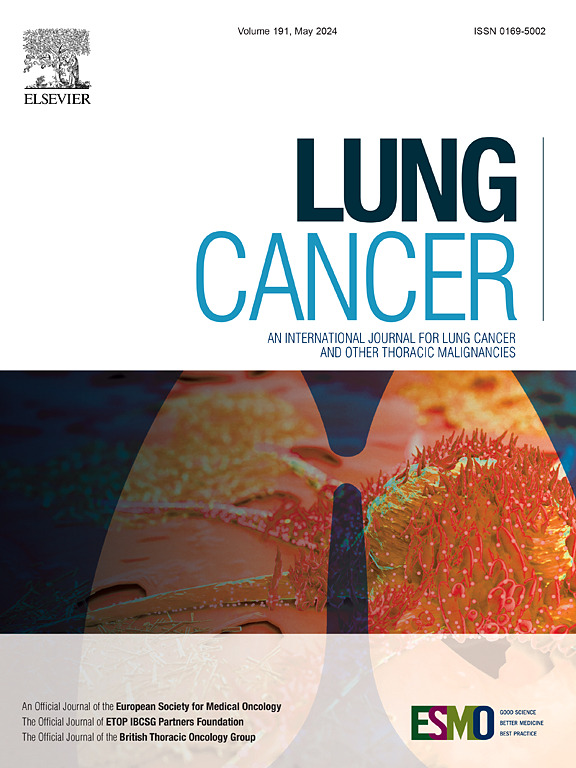CRES3T: A single-arm confirmatory trial of S-1 plus cisplatin with concurrent radical-dose radiotherapy followed by surgery for superior sulcus tumors
IF 4.5
2区 医学
Q1 ONCOLOGY
引用次数: 0
Abstract
Purpose
This multicenter single-arm confirmatory trial (CRES3T) investigated the efficacy and safety of S-1 + cisplatin and concurrent radical-dose radiotherapy followed by surgery in patients with a superior sulcus tumor.
Methods
Patients received induction therapy comprising three cycles of S-1 + cisplatin with concurrent radiotherapy (66 Gy in 33 fractions) followed by surgery. S-1 was administered orally at 40 mg/m2 twice/day on days 1–14, with an intravenous infusion of cisplatin (60 mg/m2) on day 1. The primary endpoint was the 3-year overall survival rate; key secondary endpoints included progression-free survival rate, objective response rate, pathological complete response rate, and toxicity.
Results
Sixty-one patients with a superior sulcus non-small cell lung cancer received induction therapy. Radiological tumor invasion sites were the chest wall (n = 57), subclavian artery (n = 18), and subclavian vein (n = 10). Forty-nine patients underwent a lobectomy and combined resection of the involved structures. The objective and pathological complete response rates were 42 % (95 % confidence interval: 29–54 %) and 33 % (95 % confidence interval: 20–46 %), respectively. The 3-year overall survival and progression-free survival rates were 73.2 % (95 % confidence interval: 60.1–82.7 %) and 53.3 % (95 % confidence interval: 40.0–65.0 %), respectively. The patterns of first tumor relapse were locoregional only in one, distant metastasis only in 18, and both in four patients. Two pneumonia cases during induction therapy and one cardiac-arrest case on postoperative day 3 resulted in death.
Conclusions
Induction therapy using S-1 + cisplatin and concurrent radical-dose radiotherapy followed by surgery maximized local control and improved overall survival without impairing safety, potentially representing a new standard treatment.

求助全文
约1分钟内获得全文
求助全文
来源期刊

Lung Cancer
医学-呼吸系统
CiteScore
9.40
自引率
3.80%
发文量
407
审稿时长
25 days
期刊介绍:
Lung Cancer is an international publication covering the clinical, translational and basic science of malignancies of the lung and chest region.Original research articles, early reports, review articles, editorials and correspondence covering the prevention, epidemiology and etiology, basic biology, pathology, clinical assessment, surgery, chemotherapy, radiotherapy, combined treatment modalities, other treatment modalities and outcomes of lung cancer are welcome.
 求助内容:
求助内容: 应助结果提醒方式:
应助结果提醒方式:


